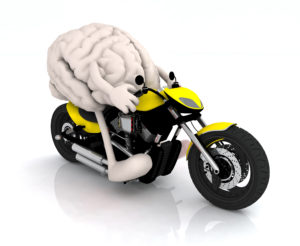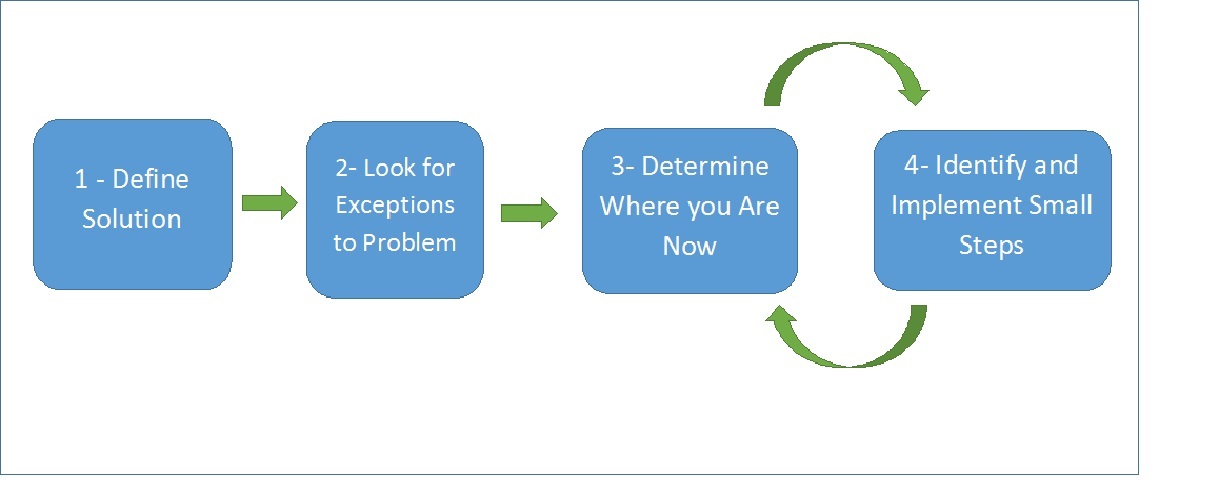Understand Perfectionism – Benefits and Costs
November 4, 2018 | Uncategorized | No Comments
Perfectionism can cause significant distress for individuals who identify with this. It can also be the cause of relationship conflict in many domains, such as work and close personal relationships. In contrast there are also benefits associated with perfectionism. This article will help you to understand perfectionism, and a way to identify if it is a problem. It also provides some tips for dealing with these problems.
What is Perfectionism?
Wikipedia provides the following definition of perfectionism.
In psychology, it is a personality trait characterized by a person’s striving for flawlessness and setting high performance standards, accompanied by critical self-evaluations and concerns regarding others’ evaluations.
Perfectionism is a commonly used term but it is also multi-dimensional. Research tends to break perfectionism into main two parts; positive achievement striving and negative evaluation of self or others.
 Many of humanity’s key achievements were probably due to at least the contribution of people with high performance standards. Because of the fact that perfectionism is linked to both positive outcomes and mental health issues, there has been a substantial amount of research on it. This has included how we can obtain the benefits and minimize any negative impacts. We want the people doing medical research, performing medical procedures on our family, building bridges and tunnels etc, to set high standards and strive to achieve them. The construct of positive perfectionism has also been defined to take into account people who have the striving element, without the negative self-evaluation. Noting that this tendency for negative self-evaluation can impact happiness, create mental health issues and also damage relationships.
Many of humanity’s key achievements were probably due to at least the contribution of people with high performance standards. Because of the fact that perfectionism is linked to both positive outcomes and mental health issues, there has been a substantial amount of research on it. This has included how we can obtain the benefits and minimize any negative impacts. We want the people doing medical research, performing medical procedures on our family, building bridges and tunnels etc, to set high standards and strive to achieve them. The construct of positive perfectionism has also been defined to take into account people who have the striving element, without the negative self-evaluation. Noting that this tendency for negative self-evaluation can impact happiness, create mental health issues and also damage relationships.
So if you consider yourself a perfectionist, or if there is someone in your life who is, what then ?
How to work out if your perfectionism is not so useful
Question 1 – Is it linked negatively to your self worth
Does your desire to be perfect stem from an inner belief that your value as a person is linked to your performance on tasks. Automatic thoughts that support the need to be perfect might be linked to a core belief that you are not lovable / worthy unless you do a perfect job. When you are undertaking the task, and in the time leading up to receiving external feedback, do you experience significant anxiety and stress as you wonder if this will be good enough ?
Question 2 – Does it cause issues with those around you
Do you find that often you don’t have sufficient time to complete the task to your standard. Does this cause problems in your work life or relationships with important others. Do you find yourself getting reprimanded for not meeting deadlines. Or in relationship, your not completing tasks on time being a cause of conflict?
Tips for Dealing with Perfectionism Problems
Self-esteem
If striving for perfection and / or not achieving it causes you distress then dependent on the severity of this stress and how it impacts your life, there are a variety of solutions. If the distress is severe or the impact is significant, they I would suggest engaging in psychotherapy. It can be very effective for this type of issue. Also any associated anxiety or depression can also be treated. For less severe distress or functioning, then beginning to work on self-esteem can help. Find ways to value yourself outside of your achievements. Look more broadly for your personal qualities beyond task achievement.
Time impact
If not having enough time to complete tasks is an impact of your perfectionism, then start to communicate how much time you need, and negotiate with the other person or people involved. Appreciate that in some situations you will need to negotiate why spending the extra time is beneficial .In some cases you will not be successful in getting the extra time. In these cases you will need to manage any associated distress. If you can do this then you will develop the capacity to choose when you wish to use your striving for perfectionism.
In finishing…….
Perfectionism can be a positive quality that supports the achievement of significant accomplishments. If you posses the striving associated with perfectionism, and can minimize any negative impacts, then great things are possible, and not at the expense of your happiness or mental health.
 As humans, whilst we are capable of holding within our mind a huge number of ideas, thoughts memories etc, it is our attention resources which are much more limited. Compounding this further is an evolutionary preference for making fast decisions. Is that a tiger approaching us in the distance or one of our friends? Not a problem most of us face on a regular basis, but one we have been designed to deal with. Whilst we possess a much more capable and complex brain than other species, we often take shortcuts to make a decision and these impact the quality of our decisions. In a previous article I explored
As humans, whilst we are capable of holding within our mind a huge number of ideas, thoughts memories etc, it is our attention resources which are much more limited. Compounding this further is an evolutionary preference for making fast decisions. Is that a tiger approaching us in the distance or one of our friends? Not a problem most of us face on a regular basis, but one we have been designed to deal with. Whilst we possess a much more capable and complex brain than other species, we often take shortcuts to make a decision and these impact the quality of our decisions. In a previous article I explored  Boredom has a very bad reputation. For a start it is not a pleasant experience. From a psychological perspective it is associated with increased risk taking and anti-social behaviour. Like all emotions it is purposeful. I will explore boredom further in this article to uncover the benefits of boredom, and enable you to capitalise on these.
Boredom has a very bad reputation. For a start it is not a pleasant experience. From a psychological perspective it is associated with increased risk taking and anti-social behaviour. Like all emotions it is purposeful. I will explore boredom further in this article to uncover the benefits of boredom, and enable you to capitalise on these. I regularly meet people in therapy who feel that their lack of ability to do things differently is due to their personality. ‘I wish I could do things differently but I am an introvert. Or ’ I’m just one of those people who doesn’t like change’. Or even, ‘I put up with this because I have a compliant personality’. Personality is another huge area of psychological theory and research and stems from our desire to define individual difference in people. An official definition is the combination of characteristics, or qualities, that form an individual’s distinctive character. It is believed that these characteristics would stay the same over a person’s life and in different situations (iie under stress, in everyday life etc). There are a number of different theories as it is difficult to absolutely define what these characteristics or should be.
I regularly meet people in therapy who feel that their lack of ability to do things differently is due to their personality. ‘I wish I could do things differently but I am an introvert. Or ’ I’m just one of those people who doesn’t like change’. Or even, ‘I put up with this because I have a compliant personality’. Personality is another huge area of psychological theory and research and stems from our desire to define individual difference in people. An official definition is the combination of characteristics, or qualities, that form an individual’s distinctive character. It is believed that these characteristics would stay the same over a person’s life and in different situations (iie under stress, in everyday life etc). There are a number of different theories as it is difficult to absolutely define what these characteristics or should be.  Anxiety is a feeling of worry, nervousness, or unease about something. Like all feelings it is purposeful. Its purpose is to spur us to action to avoid future threats that in the past have resulted in fear and / or stress for us.
Anxiety is a feeling of worry, nervousness, or unease about something. Like all feelings it is purposeful. Its purpose is to spur us to action to avoid future threats that in the past have resulted in fear and / or stress for us. There is a large number of articles on the subject of conflict and conflict resolution. This article is from a different perspective. When working with clients in therapy they often have found the standard approaches do not work. They were finding that whilst on the surface all parties seemed to be engaging in the conflict resolution process their subsequent actions did not reflect this. Or in conflict with people they were in close relationship with, the consequences of the conflict were out of proportion to what the conflict was about. My take on why this happens is that often the struggle with conflict is less about conflict. It is more about relationships, and our own beliefs about conflict. I will explore this more in this article.
There is a large number of articles on the subject of conflict and conflict resolution. This article is from a different perspective. When working with clients in therapy they often have found the standard approaches do not work. They were finding that whilst on the surface all parties seemed to be engaging in the conflict resolution process their subsequent actions did not reflect this. Or in conflict with people they were in close relationship with, the consequences of the conflict were out of proportion to what the conflict was about. My take on why this happens is that often the struggle with conflict is less about conflict. It is more about relationships, and our own beliefs about conflict. I will explore this more in this article.
 I’m noticing a trend with the clients I work with that when struggling with life problems, often advice from friends and family is offered, but from the receiver’s perspective it may not be helpful. Many times when we are going through a struggle, just being heard and validated is enough for us to access our own internal wisdom and intuition.
I’m noticing a trend with the clients I work with that when struggling with life problems, often advice from friends and family is offered, but from the receiver’s perspective it may not be helpful. Many times when we are going through a struggle, just being heard and validated is enough for us to access our own internal wisdom and intuition. Have you ever noticed how creative people such as writers and directors can create vastly different stories about the same historical events. Emphasising different characters and different perspectives can create very different stories. Examples are books written from the perspective of people on different sides of a major war. This isn’t about disputing external fact about these events. It is more about how it was perceived and experienced by different people. From a psychological perspective, it is what meaning they gave to it.
Have you ever noticed how creative people such as writers and directors can create vastly different stories about the same historical events. Emphasising different characters and different perspectives can create very different stories. Examples are books written from the perspective of people on different sides of a major war. This isn’t about disputing external fact about these events. It is more about how it was perceived and experienced by different people. From a psychological perspective, it is what meaning they gave to it. The setting of goals is an important part of living a purposeful life. While
The setting of goals is an important part of living a purposeful life. While